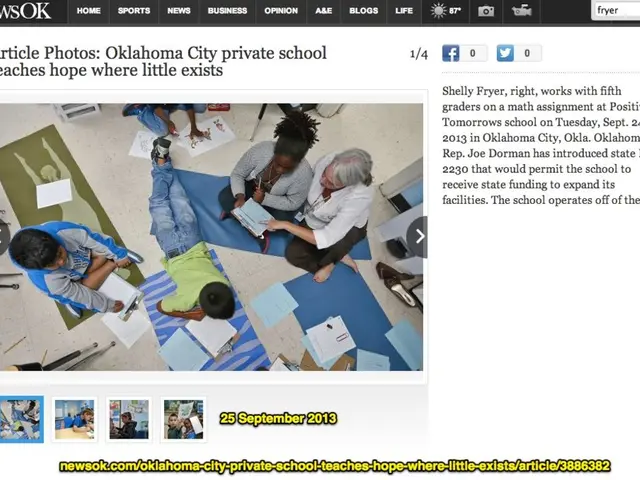Uneducated youth fever sweeping through Germany, affecting millions.
Persistent Skills Gap: Here's Why Young Germans Aren't Trained
Hey there! Ever wondered why so many young folks in Germany lack vocational training? Let's dive in.
Over 1.6 million 20- to 34-year-olds are without a trade or degree - a number that keeps growing year after year. According to the Institute for Employment Research (IAB), this group has grown by 460,000 over the last 12 years[1].
But it's not just about numbers. Germany lacks over 530,000 skilled workers nationwide on average, and the scarcity is predicted to reach 730,000 by 2027, as per the Institute of the German Economy[1].
Dropouts and Immigrants: The Main Culprits
So, what's causing this critical skills gap? Professor Enzo Weber of the IAB points to school dropouts and immigration[2]. Every year, tens of thousands of students complete school without a diploma - 6% of all students in 2021 didn't even achieve the lower secondary school leaving certificate[3]. And without this basic education, getting an apprenticeship becomes harder, as three-quarters of young people without vocational training also don't have a diploma[1].
Immigration also plays a role, particularly among refugees. Around 45% of 20- to 34-year-old refugees from countries like Syria or Afghanistan have no vocational training[2].
Bridging the Gap
Weber suggests stronger integration into the labor market[2]. He proposes recognizing competencies, further developing them in a vocational context, and further qualifying to eventually achieve the required training.
Additionally, low-threshold training offers could be made available to allow individuals to complete certain modules in a flexible fashion, parallel to work, eventually earning a final qualification after a few years alongside the job[1].
Lastly, companies should step up their career guidance efforts. They should be more present in schools and at career fairs, offer practical experiences, such as internships, student projects, and company visits, and make better use of online communication platforms young people frequent, like YouTube, WhatsApp, and TikTok[4].
In essence, addressing the skills gap necessitates a combination of educational, employer, and government efforts to ensure a stronger, more skilled workforce for the future[1][4].
Explore More:
- Institute for Employment Research (IAB)[1]
- Federal Institute for Vocational Education and Training (BIBB)[1]
- Federal Statistical Office
- Bertelsmann Foundation[4]
- Social Networks - YouTube, WhatsApp, TikTok
- Craft Trades - Finishing and Drywall Construction
- Apprenticeships
- Universities
- Job Market Instability
- Immigration Reform
- Chancenkarte (Opportunity Card)
- Points-Based Visa System
- Language Classes
- Housing and Administrative Support
- Integration Programs
Community aid could be directed towards vocational training programs to address the skills gap among young Germans, particularly among school dropouts and refugees. Education-and-self-development initiatives could focus on general-news topics such as career guidance, apprenticeships, and low-threshold training offers. These programs could be facilitated through integrated labor market efforts, recognition of competencies, and development in a vocational context, as well as offering practical experiences and being more present on social networks frequented by young people.







